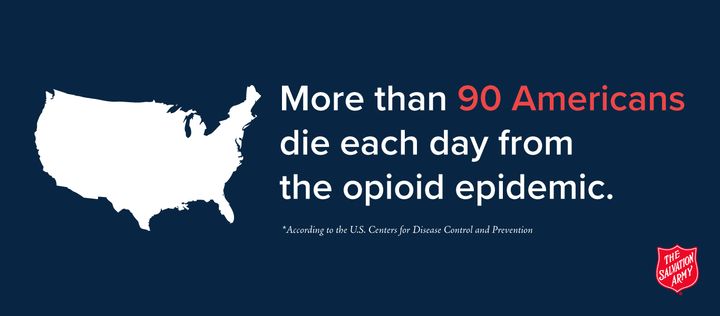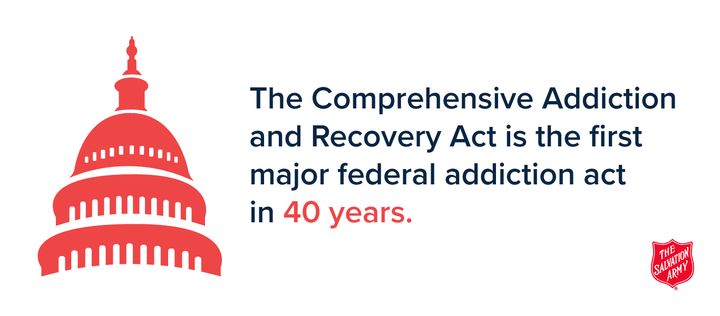By Commissioner David Jeffrey
Last summer, President Barack Obama signed The Comprehensive Addiction and Recovery Act (CARA) into law to combat the skyrocketing opioid epidemic in our country. Drug overdoses related to prescription pain relievers and heroin are now the leading cause of death among Americans under 50. More than 90 Americans die each day from the opioid epidemic.

As you may have seen in the news, rustbelt states are at the center of the epidemic. In Ohio, according to the state Department of Health, opioid-related deaths jumped from 296 in 2003 to 2,590 in 2015 – a 775 percent jump. In Indiana, we’ve seen double digit percentage increases in the patient count at our Harbor Light Centers, which offer treatment and recovery programs for those struggling with addictions.
With support from lawmakers on both sides of the aisle, CARA is the first major federal addiction act in 40 years. The legislation encompasses all six pillars necessary for a coordinated response – prevention, treatment, recovery, law enforcement, criminal justice reform and overdose reversal. CARA gives nonprofit organizations such as The Salvation Army critical help for our work with the thousands of Americans struggling with addiction. To mark the first year since the legislation passed, I asked Wisconsin Representative Jim Sensenbrenner about how we can continue to raise awareness about the severity of the opioid epidemic.
Q: What is the Comprehensive Addiction and Recovery Act (CARA) and how does it help Americans struggling with addiction to opioids?
A: The Comprehensive Addiction and Recovery Act (CARA) helps those with addiction through alternative incarceration programs and outpatient treatment options for non-violent drug offenders. Such options not only better serve individuals, but save significant taxpayer dollars. The legislation also creates community-based anti-drug coalitions and a national education campaign, which helps rebuild communities, deter young Americans from trying drugs, and stalls the increase of addicts, overdoses, and deaths.

Q: Why do you feel it’s important to raise awareness about the rise in opioid consumption?
A: Opioid abuse has become a major problem in the United States. Not only does it ruin the lives of individual users, but it has negative impacts on the families and friends of abusers as well. Addiction also weakens communities and puts unnecessary added pressure on taxpayers who ultimately pay for increased health care, incarceration, and judicial costs.
Q: What should every American know about the opioid epidemic?
A: Opioid addiction isn’t specific to any one demographic. It grips individuals from all walks of life. From urban neighborhoods, to quiet suburbs, to rural America.
Q: Why is continued support still needed for federal legislation to combat the opioid epidemic?
A: Between 2002 and 2013, national heroin deaths nearly quadrupled, reaching more than 8,000 annually by 2013. In that same year, an estimated 517,000 people used heroin – a figure up 150 percent from just six years earlier.
Between 2006 and 2011, my home state of Wisconsin experienced a 350 percent increase in heroin samples submitted to the Wisconsin State Crime Laboratory by law enforcement. In 2012, the number of heroin-related deaths jumped by nearly 50 percent and statewide data shows one quarter of Wisconsinites who abuse the drug began using when they were younger than 25 years old.
It’s clear that this problem won’t solve itself. It will take the hard work and cooperation of Congress, as well state and local entities, to find and implement serious solutions to fight this epidemic.
Q: How can social service providers help raise awareness about the opioid epidemic or help those struggling with addiction?
A: The community-based anti-drug coalitions noted in CARA will play a large role in helping social service providers on the local levels. While the federal government can help with these efforts through additional funding, the real, meaningful work takes place within communities.
Q: What’s been the most surprising thing you’ve learned about people struggling with addiction to opioids?
A: The fact that many abusers begin at a young age is troubling, which is why some provisions within CARA focus on an awareness campaign. It’s critical that we not only help those currently struggling with addiction, but also our nation’s young adults. If we can stop them from trying opioids and other drugs, we can stop the tragedies of addiction before they happen.
Follow The Salvation Army on Twitter: @SalvationArmyUS
